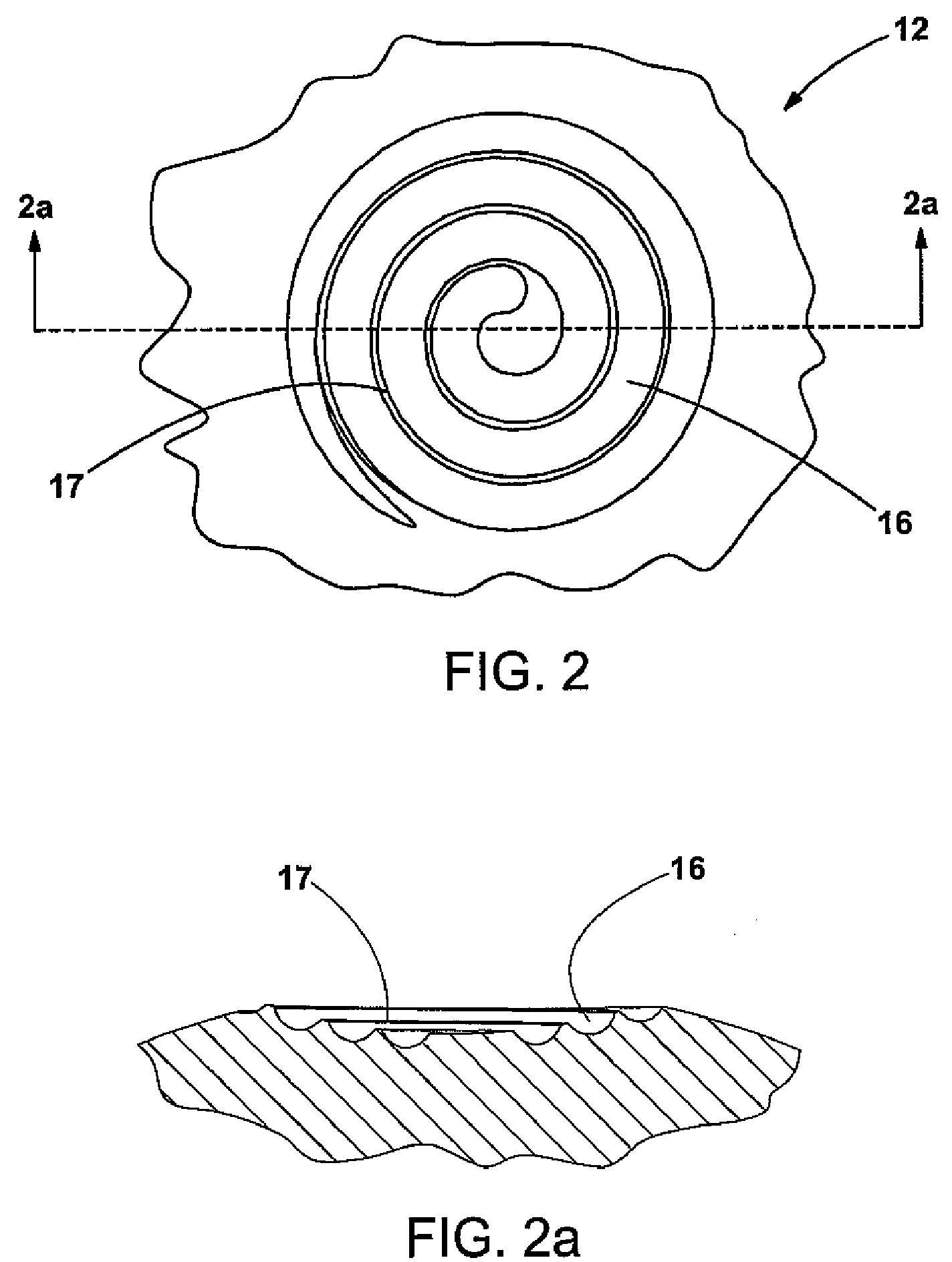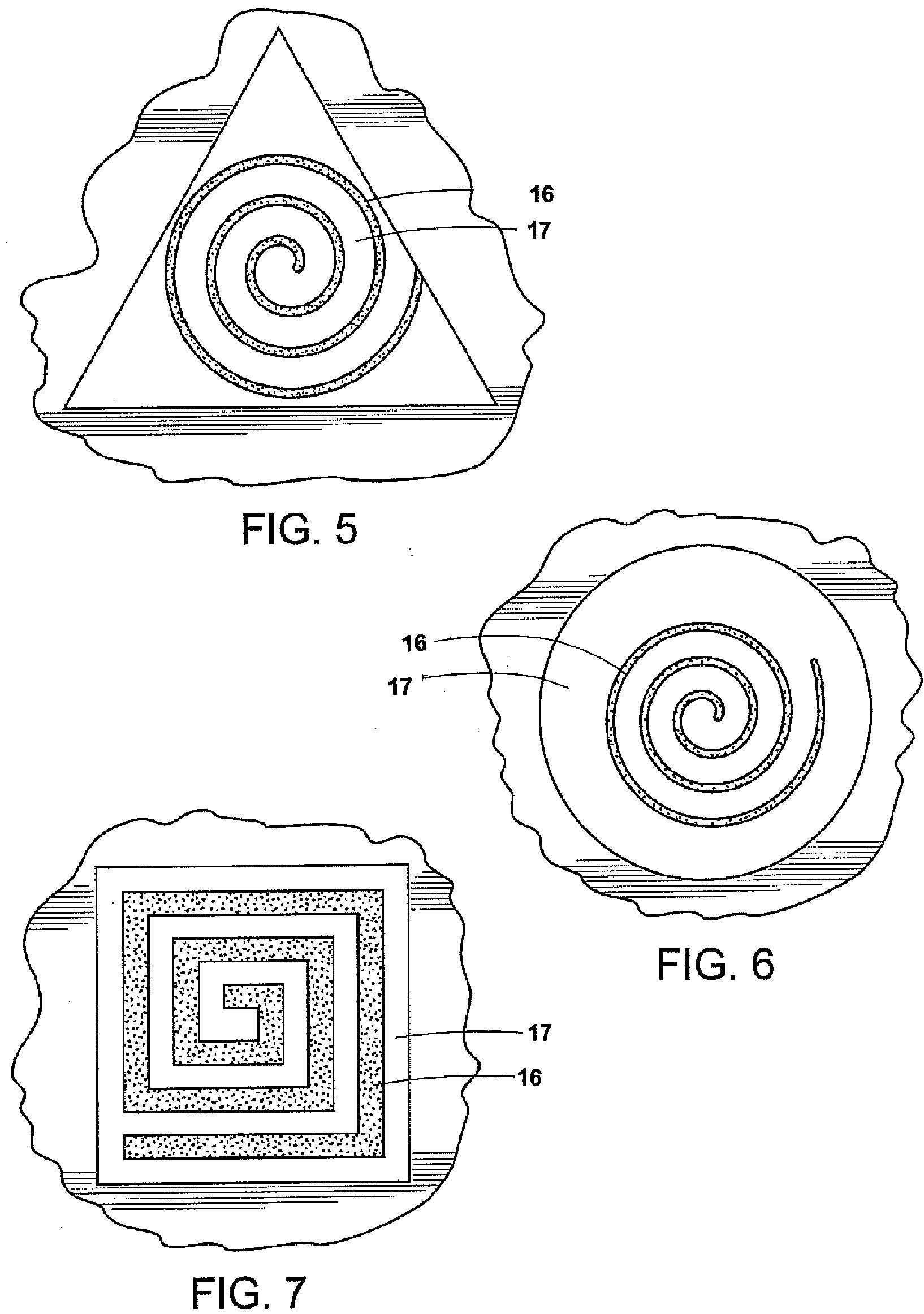You Will Have to See the Latest Published Acushnet Golf Ball Patent Application to Believe It!
Check out these golf ball dimple variations:




The drawings come from an Acushnet patent application that published last week as US Pub. No. 20080261725 titled “Golf Ball Dimples with Spiral Depressions.” The patent application describes the invention as:
The patent application provides an excellent explanation of the drag and lift associated with a golf ball:
[0003] Drag is the air resistance that opposes the golf ball’s flight direction. As the ball travels through the air, the air that surrounds the ball has different velocities and thus, different pressures. The air exerts maximum pressure at a stagnation point on the front of the ball. The air then flows around the surface of the ball with an increased velocity and reduced pressure. At some separation point, the air separates from the surface of the ball and generates a large turbulent flow area behind the ball. This flow area, which is called the wake, has low pressure. The difference between the high pressure in front of the ball and the low pressure behind the ball slows the ball down. This is the primary source of drag for golf balls.
[0004] The dimples on the golf ball cause a thin boundary layer of air adjacent to the ball’s outer surface to flow in a turbulent manner. Thus, the thin boundary layer is called a turbulent boundary layer. The turbulence energizes the boundary layer and helps move the separation point further backward, so that the layer stays attached further along the ball’s outer surface. As a result, there is a reduction in the area of the wake, an increase in the pressure behind the ball, and a substantial reduction in drag. It is the circumference portion of each dimple, where the dimple wall drops away from the outer surface of the ball, which actually creates the turbulence in the boundary layer.
[0005] Lift is an upward force on the ball that is created by a difference in pressure between the top of the ball and the bottom of the ball. This difference in pressure is created by a warp in the airflow that results from the ball’s backspin. Due to the backspin, the top of the ball moves with the airflow, which delays the air separation point to a location further backward. Conversely, the bottom of the ball moves against the airflow, which moves the separation point forward. This asymmetrical separation creates an arch in the flow pattern that requires the air that flows over the top of the ball to move faster than the air that flows along the bottom of the ball. As a result, the air above the ball is at a lower pressure than the air underneath the ball. This pressure difference results in the overall force, called lift, which is exerted upwardly on the ball. The circumference portion of each dimple is important in optimizing this flow phenomenon, as well.
[0006] By using dimples to decrease drag and increase lift, every golf ball manufacturer has increased their golf ball flight distances. In order to optimize ball performance, it is desirable to have a large number of dimples, hence a large amount of dimple circumference, which is evenly distributed around the ball. In arranging the dimples, an attempt is made to minimize the space between dimples, because such space does not improve aerodynamic performance of the ball. In practical terms, this usually translates into 300 to 500 circular dimples with a conventional-sized dimple having a diameter that ranges from about 0.110 inches to about 0.180 inches.
[0007] When compared to a given number of conventional-size dimples, theoretically, an increased number of small dimples could create greater aerodynamic performance by increasing total dimple circumference. However, in reality small dimples are not always very effective in decreasing drag and increasing lift. This results at least in part from the susceptibility of small dimples to paint flooding. Paint flooding occurs when the paint coat on the golf ball partially fills the small dimples, and consequently decreases their aerodynamic effectiveness. On the other hand, a smaller number of large dimples also begins to lose effectiveness. This results from the total circumference of a given number of large dimples being less than that of an alternative group of smaller dimples.
The application also explains the benefits associated with dimples having spiral depressions as:
So, in a nutshell…. the spiral depressions further agitate or energize the boundary layer flow over the dimples and reduce the tendency for separation of the turbulent boundary layer around the golf ball in flight. Amazing! Now that is some pretty cool golf technology.
Dave Dawsey – Tracking Golf Ball Technology
PS – click here for other golf ball posts
